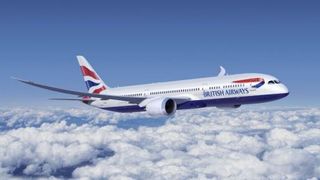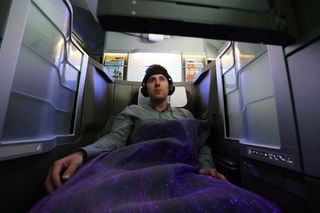A guide to sleeping on long-haul flights
Here’s how you can get the best possible sleep on long-haul flights, and beat jet lag

Signing up to do an Ironman in Australia, a marathon in the states or going on a tour of Asia with your sports team all sound like amazing ideas on paper. After all, you get to combine a holiday with something you’re passionate about and have been training for over the last weeks, months or even years. The only potential problem? Arriving exhausted from the long-haul flight you take to get there.
Being sleep deprived is one of the worst possible states to be in when competing in any kind of physical activity, at any level. As well as the feelings of general fatigue associated with tiredness a study by the University of New South Wales found that even moderate sleep deprivation slows reaction times so much that it’s the equivalent of being tipsy.
Lose the lag
If your flight is during the day you need to make sure you stay awake so you don’t interfere with your body clock, then when you land you need to ensure you don’t go to sleep until it’s nighttime. Still, the interruption of your internal body clock (technically known as your circadian rhythm) can still affect you. This is because it’s controlled by cells in the brain that regulate your brain’s production of melatonin (the hormone that controls your sleep cycles) based on how much light or darkness you are exposed to. In short, jet lag can be a bitch.
If you can, book enough time off work so you can have at least three full days to recover after landing before your event. If you’re sleep-deprived before flying, passing through more than four timezones, or are travelling east then five days is optimum.
Science of sleep
When flying through the night you need to try and get as much sleep as possible, especially if you’re landing at your destination in the morning. British Airways recently ran some interesting experiments where they used specially made blankets to monitor passenger’s brainwaves to visually represent how relaxed they were (the blankets were connected via Bluetooth to a brainwave sensor and woven with fibre optics that changed colour in real time, see below) and find out what people should avoid to get the most sleep possible.

Topping the list of pre-sleep absolute no-no’s were alcohol, stressful films such as thrillers and horrors, and stimulants such as sugar and caffeine. It even seemed to suggest that one old wives’ tales is true: eating cheese made passenger’s blankets shine bright red, indicating their brain activity had gone into overdrive.
Though lighthearted films put the passengers in more relaxed states, ideally you should avoid screens all together according to Cornell University researcher and sleep expert Rebecca Robins (who advised British Airways on what their passengers can do to get the best quality shut-eye) because they emit blue light on a similar spectrum to sunlight, tricking your brain into thinking it’s daytime.
Get the Coach Newsletter
Sign up for workout ideas, training advice, reviews of the latest gear and more.
High flyer
Of course, if you have the money your best bet for comfort is to fly anything but economy so you have more space. If you can afford to fly business class you could even have a completely flat bed. British Airways’ new Boeing 787 Dreamliner planes go so far as to have adjustable colour LED mood lighting that reflects the time of day throughout the flight, and lower cabin pressurisation to reduce the onset of headaches, fatigue and jet lag.
Though the price tag is large, it’s certainly worth saving for it if you want to get the best quality sleep as possible. This is especially true if you are competing in an important competition or an event that you’ve been working towards for years. Sadly though, for some of us that just won’t be possible.
Whether you have an eye-wateringly large salary or not, follow Rebecca Robbins top tips for optimum sleep on a long-haul flight that can help you’re flying at the front or back of the plane.
Be prepared
‘Bring a good quality neck pillow, eye mask and ear plugs for comfort, darkness and silence,’ says Robbins. ‘Some airlines provide these but it’s always best to have your own just in case, plus it’s always easier to sleep with familiar things rather than trying something new for the first time.’
Power nap
‘No matter how comfortable you are, there can be a lot of interruptions while flying,’ says Robbins. ‘Instead of attempting to sleep the whole way choose 90-minute windows to get some shut-eye. This will allow you to go through all the stages of sleep including REM. If you sleep longer and are interrupted mid-cycle you will feel groggy upon waking.’
Embrace the change
‘The bigger head start you give your body to get used to jetlag, the better,’ says Robbins. ‘As soon as you board set your watch to the time at your destination and follow your normal routines including mealtimes, bedtimes and pre-bed rituals such as brushing your teeth. If the local time means you have to stay up, consider getting a product such as a Litebook that emulates sunlight to trick your circadian rhythm into thinking it’s still daytime.’
Max was the head of digital content for Men's Fitness which worked alongside Coach between 2015 and 2019.

